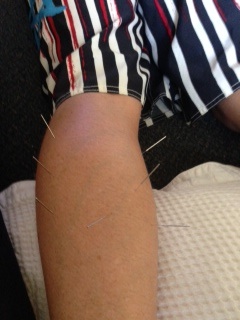What is the difference between Dry Needling and Acupuncture?
Acupuncture is based on traditional Chinese medicine and Dry Needling is based on Western medicine research.It is called “dry needling” as there is no solution injected from the needle. The needle itself produces physiological effect and change to the muscle tissue.
What are trigger points?
When an injury occurs the muscle tissue goes into a “protective” state to prevent further damage, decreasing blood flow to the area. A build up of scarring forms a muscle knots and often feel like a rubber band like nodule called a “trigger point”.
How do trigger points cause pain?
Trigger points limit the ability for the muscle to function (contract and relax properly) causing pain and sometimes nerve irritation; which can radiate locally or refer to other areas sometimes distant from the trigger point itself.
How does dry needling/acupuncture work?
Dry needling targets trigger points, which may elicit local tenderness, referred pain or a local twitch response. It will then produce physiological changes to the damaged muscle tissue including an increase of blood flow to the area to assist the inflammatory stages of healing. Which will result in reduced pain and an increase in ease of movement.
Types of conditions dry needling can help:
– Lower back pain
– Neck pain and headaches
– Knee pain
– ITB syndrome
– Hip and gluteal pain
– Plantar fasciitis
– Achilles tendinosis
– Sciatica
– Acute or chronic swelling
– Reducing muscle tension and spasm
– Tennis/golfers elbow
What to expect after treatment:
– Increase ROM
– Decrease Pain
– You may have some soreness lasting between a few hours – day and/or occasional bruising
Click here to download article: Dry Needling
